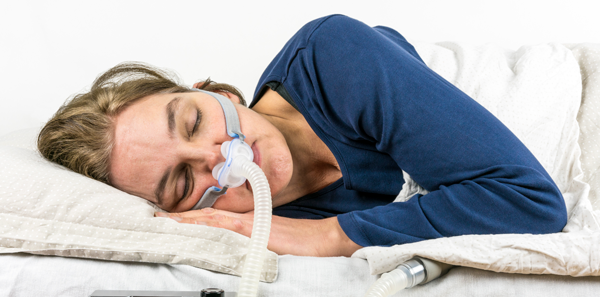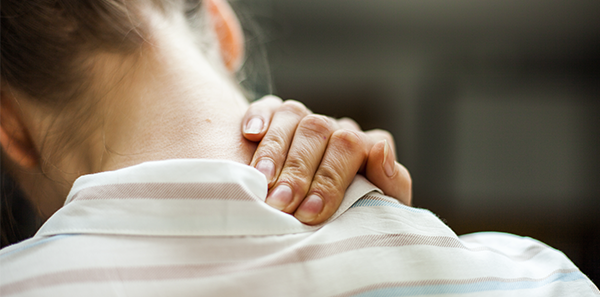
Obstructive Sleep Apnoea-Hypopnoea Syndrome (OSAHS) is a sleep disorder that affects 2% to 4% of the adult population. It is more common in men, is often associated with overweight or obesity and its prevalence increases with age.
It is characterised by pauses in breathing, which are usually noticed by the person’s partner or family, as the individual with OSAHS is not normally aware of it. When we are asleep, all the muscles in our body relax, including those of the oropharynx (tongue, soft palate, uvula). As these muscles relax, they collapse into the airway, causing an obstruction. The degree of closure can vary, so if it is only partially closed, the air continues to enter but through the narrowed airway, which makes a noise: snoring. Isolated snoring is annoying for the person’s bed partner, but does not pose a risk to their health. The problem comes when the airway is more closed (hypopnoea) or completely obstructed (apnoea). In these cases, there may be a low level of oxygen in the blood, causing cardiovascular distress.
The brain eventually “detects” this lack of breathing and briefly arouses the body so that the muscles can resume their proper position and breathing can return to normal. This process can occur repeatedly many times throughout the night. This condition is diagnosed with a sleep study (videopolysomnography) in which many of the patient’s physiological parameters are monitored, including their breathing.
If the patient suffers more than 5 apnoea/hypopnoea episodes per hour of sleep, they are diagnosed with OSAHS. The symptoms vary greatly: they can be divided into night-time symptoms (snoring, pauses in breathing witnessed by the patient’s partner, getting up several times a night to urinate, dry mouth, excessive night sweats, restless sleep with frequent kicking or movements, feeling of sleeping lightly) and daytime symptoms (not feeling refreshed on waking, drowsiness in monotonous situations, morning headaches, irritability, apathy, fatigue, problems with concentration and memory).
Patients with sleep apnoea are at increased risk of cardiovascular and cerebrovascular disease, as well as traffic and work accidents. Sleep apnoea is treated in several ways: first, it is important to correct any causative or aggravating factors such as smoking, alcohol use or central nervous system depressants (sedatives and anxiolytics) and to lose weight in the case of overweight patients. The treatment of choice is CPAP, a device that delivers pressurised air to the upper airway via a mask, thereby keeping it open and preventing it from collapsing.
There are two types of CPAP: fixed pressure CPAP, and AutoCPAP or automatic titrating CPAP, which delivers varying pressures according to varying inhalation needs throughout the night. Some patients can also benefit from postural treatment and, in some cases, from a mandibular advancement device, so it is very important to assess each case individually.
Dr. Paula Giménez–Director of the Multidisciplinary Sleep Medicine Unit. Clínica Vistahermosa HLA Hospital group
The information published in this media neither substitutes nor complements in any way the direct supervision of a doctor, his diagnosis or the treatment that he may prescribe. It should also not be used for self-diagnosis.
The exclusive responsibility for the use of this service lies with the reader.
ASSSA advises you to always consult your doctor about any issue concerning your health












